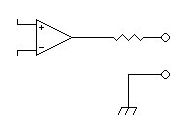I was presented with a neat little rack mounting 4-channel headphone driver for use in recording situations.
Typical story, loaned to somebody and came back with a dead channel.
It is important as a tech that you try and get the back story to a fault, “How did it happen?”.
Of course some faults are the result of someone doing something silly like grabbing the wrong end out of a tangle of cables and later find that they have accidentally connected the output of their guitar amp to something fragile - like a headphone output.
The problem is that people often either don't know what they, or others, did that caused the fault, or if they do know may not like to admit to doing something stupid.
But a tech with any experience knows how easy it is to make such errors, that they themselves do “stupid” things occassionally, and if you are going to fix something you really need to have the whole story.
“Just concentrate on the facts, Watson.” The gear itself will spill the beans. This is where teching becomes forensic detective work. You may have many witness accounts, but the gear itself will always tell you the true story. It may not be the whole story, but it won't lie. It's up to you to observe and make sense of the splat marks on the chassis and the loose power switch, the new 6CA7 screen resistors with blackening all around, the out-of-era component.
The wise tech will avoid being judgemental or making fun of the victim's misfortune, no matter how mind-numbingly silly the situation might be. Sometimes the gear will yell at you that the story you have been told simply cannot be right. It is almost always better to nod knowingly and not call the client a liar - they are most likely just trying to save face.
You also have to be alert that sometimes the most unlikely story turns out to be true. Confronted with a flashed-over output transformer, while the user swears blind it was connected to the speaker when it failed, it can be your clue that the real problem, the base case, lies elsewhere, and the speaker lead, connectors and cabinet are due to a fine-tooth going over.
Even before I had the lid off I could smell it, possibly via all the connector holes - the unmistakable whiff of a well-fried resistor.
When the lid came of it almost knocked you over, but unlike valve output stages that burn up their screen resistors, there were no obvious signs of widespread fireworks or smoking. But it didn't take long to sniff out the badly charred remains.
It was in one of the output circuits and it was obvious that someone had injected quite a bit of power into that headhone socket. We can only conjecture, but it looks certain that at some point the output of a well-driven amp was connected to this headphone output.

Four identical headphone drivers
A few quick power on tests with a multimeter showed nothing else amiss, power was good and stage voltages matched,so we simply replaced the burnt resistor, taking the value from the other amps, and music!
The vast majority of repairs are dumb, like their causes, and can be found by acute observation with no instruments at all. To me the smell of burnt transformer (varnish), resistor (paint -like), capacitor (acrid), inductor (varnish/rubber/epoxy), mud or glass PCB (burnt paper or subtle), are all quite different. {And no doubt quite toxic too - tantalum caps smell vile.}
Tech “magic”...
Muso: “My combo reverbs' stopped working”
(Tech tilts Fender combo on its side and notes the sound of something sliding down the bottom inside.)
“Springlines' stuffed”.
Teching only looks like magic when you don't know how it's done. Bit like lead guitar.
Once the fault is understood the repair action becomes obvious (although in the field or on stage you often have to improvise tests and test equipment, tools, and sometimes components).